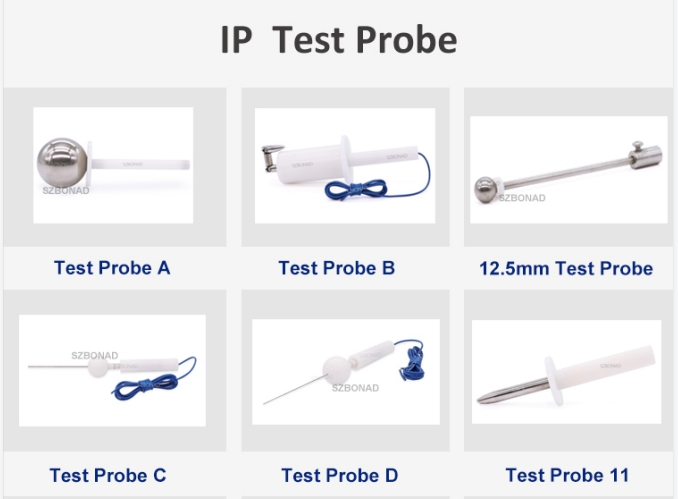How to Use the IP Test Probes?
When testing the protection of persons against hazardous parts on low-voltage equipment, a low-voltage supply in series with a suitable lamp needs to be connected between the probe and the hazardous parts inside the enclosure. After the setup, you are required to push the access probe against or (P2X) inserted through any openings of the enclosure with the specified force listed in the standard you follow.
When testing the protection against the ingress of solid foreign objects, you need to push the object probe against any openings of the enclosure with the given force.
What are the Acceptance Conditions for the Tests Using the lP Test Probes?
For testing the protection of persons against hazardous parts, the protection level is eligible if adequateclearance is kept between the access probe and hazardous parts. The lamp shall not light if verified by a signalcircuit between the probe and hazardous parts. When using the lP1X access sphere, it should not completelypass through the opening
For testing the protection against the ingress of solid foreign objects, the protection level is eliqible if the fulldiameter of the probe doesn't pass through any opening.
Please check the below IP1X/IP2X/IP3X/IP4X Test probes list:
Model/Name | Standard | Specification |
BND-A | IEC60529 IEC61032 IEC60335 | Ball Diameter:50mm |
BND-AF | IEC60529 IEC61032 IEC60335 | Ball Diameter:50mm |
BND-B | IEC61032 IEC60950 IEC60335 | Knurled Finger Diameter:12mm |
BND-BF50 | IEC61032 IEC60950 IEC60335 | Knurled Finger Diameter:12mm |
BND-C | IEC61032 IEC60529 | Test Probe Length:100mm |
BND-CF | IEC60335 | Test Probe Length:100mm |
BND-D | IEC61032 IEC60529 | Test Probe Length:100mm |
BND-DF | IEC60335 | Test Probe Length:100mm |


